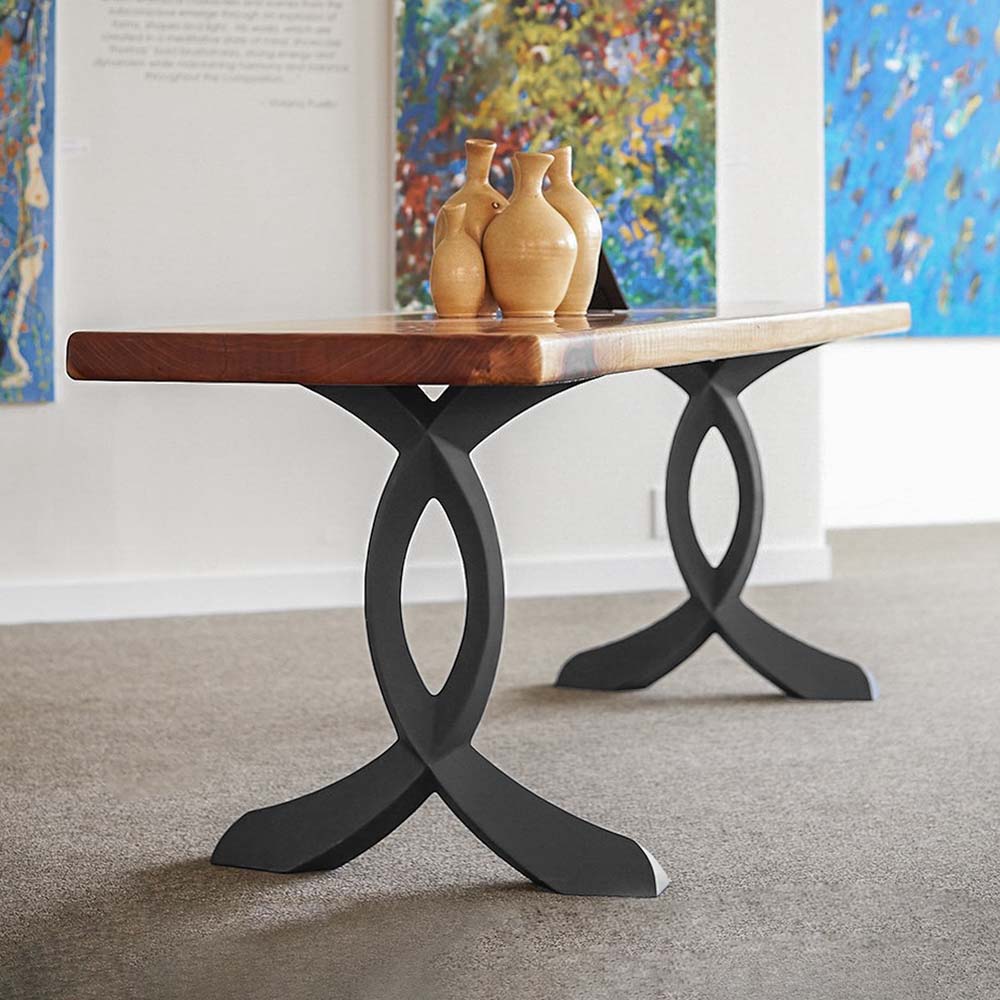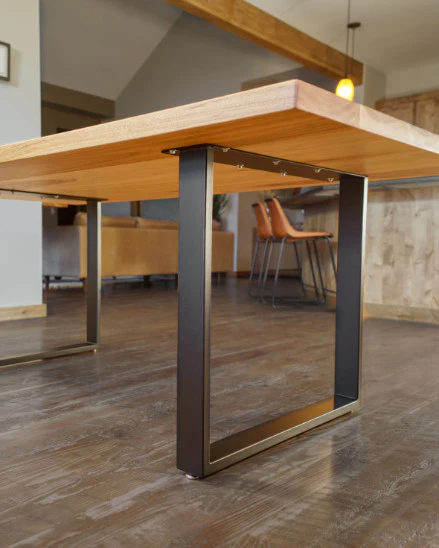Checking Out Different Layouts for Dining Room Table Legs to Match Your Visual
Checking Out Different Layouts for Dining Room Table Legs to Match Your Visual
Blog Article
Selecting the Perfect Table: What Styles Job Best for Your Home?
Choosing the perfect eating table for your home can be a nuanced process that balances aesthetics and functionality. Whether your room leans towards conventional elegance, modern-day minimalism, rustic appeal, or commercial trendy, the selection of designs available can accommodate diverse preferences. Each design offers special advantages and obstacles that can either improve or interrupt your dining area's consistency. Recognizing how various materials, shapes, and sizes interact with your existing style is crucial. To navigate these options efficiently and find a table that genuinely enhances your home, consider the complying with facets thoroughly.
Analyzing Your Space
Reviewing the measurements and format of your dining location is a vital very first step in picking the excellent table. Begin by measuring the length and width of the space, accounting for entrances, windows, and other architectural attributes that might influence table positioning. This makes certain that your table not just fits however additionally permits comfy motion around it.
Take into consideration the variety of individuals you generally captivate. A table should suit your household's everyday demands while providing sufficient adaptability for occasional guests. As a regulation of thumb, allocate at least 24 inches of table size per individual to make certain a comfortable dining experience.
It's additionally important to keep appropriate clearance around the table. Ideally, there should be at least 36 inches in between the table side and wall surfaces or other furniture, allowing easy gain access to and activity. For rooms where chairs with arms or extra storage units like buffets are included, boosting this clearance to 48 inches is recommended.
Illumination and atmosphere play substantial duties. Guarantee that your table lines up with existing lights components or strategy for adequate illumination options. This detailed spatial analysis warranties that your table not just fits physically yet likewise integrates with your space's overall performance and visual.
Popular Table Styles

Standard table usually feature ornate details, rounded legs, and abundant timber coatings, evoking a sense of ageless style. They are perfect for homes with timeless decoration or those seeking to include a touch of refinement to their dining area.
Modern dining tables prioritize simplicity and clean lines, usually integrating products like glass and metal. These tables are ideal for modern spaces, providing a streamlined and minimalist appearance that complements minimalist design philosophies.
Rustic table, on the other hand, highlight natural materials and a handcrafted appearance - dining room table legs. They often include redeemed timber and a troubled surface, creating a warm and inviting atmosphere. These tables function well in farmhouse-style homes or those seeking a relaxing, organic feel
Industrial dining tables integrate raw materials such as metal and wood, typically showcasing an utilitarian visual. This design is fit for loft spaces or city areas, including a touch of rugged beauty and resilience to the eating experience.
Each style provides distinct benefits, making it important to select one that aligns with your home's general layout and your individual choices.
Material Selections
When selecting a table, the selection of material plays a crucial function in figuring out both the table's looks and performance. Timber, metal, glass, and composite materials each offer one-of-a-kind benefits and difficulties, making site link it imperative to line up the product with your home's decoration and lifestyle demands.
Timber is a timeless and flexible alternative, available in selections such as oak, walnut, and mahogany. Known for its longevity and warmth, timber enhances both typical and modern insides. Nonetheless, it calls for regular upkeep to stop scrapes and bending.
Metal tables, frequently crafted from stainless-steel, aluminum, or wrought iron, are applauded for their modern allure and robustness. They are particularly suited for commercial or minimal setups but can be susceptible to damages and may really feel chilly to the touch.
Glass table bring an air of beauty and visibility, perfect for smaller sized areas as they produce an illusion of more space. While easy to clean, glass can be vulnerable to spots and needs careful managing to stay clear of chips and fractures.
Composite products, such as MDF and plywood, offer cost-efficient and customizable remedies, though they might do not have the long life of natural products. Picking the best product Find Out More ensures your table is both a functional asset and an aesthetic pleasure.
Sizes And Shape Factors To Consider
After figuring out the suitable product for your dining table, the following consideration is choosing the right form and size to fit your room. On the other hand, rounded tables foster a feeling of intimacy and are exceptional for smaller dining locations, encouraging discussion by eliminating corners and making every person feel similarly consisted of.
Size is similarly crucial and must be determined by both the room's measurements and the variety of people you prepare to seat regularly. As a policy of thumb, allot a minimum of 24 inches of table width per individual to ensure comfortable eating. In addition, consider the table's clearance area: there need to be at least 36 inches between the table side and the wall surfaces or various other furniture. This guarantees that restaurants can walk around easily without feeling cramped. Prolonging tables provide versatility if you regularly organize bigger gatherings, offering extra seating when required without inhabiting added room daily. Picking the right shape and size guarantees both functionality and visual consistency in your eating location.
Matching Your Style
Selecting an eating table that integrates with your existing design is pivotal in developing a natural and inviting room. Begin by examining your present interior decoration style, whether it be contemporary, traditional, rustic, or diverse. The table need to match the overall visual, not contend with it. A streamlined, minimalist table with tidy lines is optimal for a modern home, while a vintage, elaborate table suits a much more traditional setup.
If your decor features warm tones and natural products, take into consideration a wood table to enhance the organic feel. On the other hand, a glass or steel table might be extra appropriate in a space dominated by amazing shades and commercial components.
A rough-hewn, reclaimed timber you could try this out table can add character to a rustic area, while a polished marble surface area can boost a luxurious eating location. A well-matched dining table not only enhances aesthetic charm but also improves the general dining experience.

Conclusion
Choosing the ideal dining table requires mindful consideration of area, design, products, form, and size (dining room table legs). Conventional tables enhance timeless insides with rich wood surfaces, while contemporary tables match modern setups through glass and metal. Rustic styles introduce heat by means of all-natural products, and commercial styles enhance urban atmospheres with raw aspects. Integrating the table with existing style ensures both functionality and visual charm, adding to a cohesive and visually pleasing dining area.
Report this page